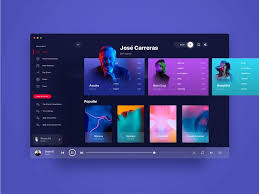The Importance of UI/UX Design in Website Development
When it comes to creating a successful website, the design plays a crucial role in attracting and retaining visitors. User Interface (UI) and User Experience (UX) design are key components that can make or break the success of a website. Let’s delve into why UI/UX design is essential in website development.
User Interface (UI) Design
UI design focuses on the visual elements of a website, such as layout, colours, typography, and interactive elements. A well-designed UI enhances the aesthetic appeal of a website and creates a visually pleasing experience for users. Clear navigation, intuitive buttons, and consistent branding contribute to a positive user interaction with the site.
User Experience (UX) Design
UX design is concerned with the overall experience that users have when interacting with a website. It involves understanding user behaviour, conducting research, and designing functionalities that meet user needs. A good UX design ensures that visitors can easily find information, navigate through the site seamlessly, and accomplish their goals efficiently.
The Benefits of UI/UX Design
Improved User Engagement: A well-crafted UI/UX design captivates users’ attention and encourages them to explore the website further.
Increased Conversions: An intuitive interface and smooth user experience lead to higher conversion rates as visitors are more likely to take desired actions on the site.
Brand Credibility: A professionally designed UI/UX instils trust in visitors and reflects positively on your brand image.
Enhanced SEO Performance: Search engines favour websites with good UX practices, such as fast loading times and mobile responsiveness.
Conclusion
In today’s digital age, having a well-designed UI/UX is essential for creating a successful website that attracts and retains visitors. By investing in UI/UX design, you can enhance user engagement, increase conversions, build brand credibility, and improve your site’s overall performance. Remember, a great website not only looks good but also provides an exceptional user experience.
Top 5 Tips for Effective UI/UX Design in Website Development
- Prioritize a clean and intuitive layout for easy navigation.
- Use consistent branding elements like colours and fonts for a cohesive design.
- Ensure fast loading times by optimizing images and code.
- Incorporate user feedback through testing to improve usability.
- Make sure the website is responsive for seamless viewing on different devices.
Prioritize a clean and intuitive layout for easy navigation.
When it comes to UI/UX design for websites, prioritising a clean and intuitive layout is essential for ensuring easy navigation. A clutter-free design with clear navigation elements such as menus, buttons, and links helps users find information quickly and effortlessly. By simplifying the layout and making key elements easily accessible, you can enhance the user experience and encourage visitors to explore your website further. A clean and intuitive design not only improves usability but also reflects positively on your brand’s professionalism and credibility.
Use consistent branding elements like colours and fonts for a cohesive design.
Using consistent branding elements such as colours and fonts is a fundamental tip in UI/UX design for creating a cohesive and visually appealing website. By maintaining a uniform colour palette and typography throughout the site, you establish a sense of continuity that reinforces your brand identity. Consistency in branding elements not only enhances the overall aesthetics of the website but also helps users to easily recognise and associate your brand with specific visual cues, contributing to a seamless and memorable user experience.
Ensure fast loading times by optimizing images and code.
To enhance the user experience of your website, it is crucial to ensure fast loading times by optimising images and code. By compressing images without compromising quality and streamlining the code structure, you can significantly improve the loading speed of your site. Fast loading times not only keep users engaged but also contribute to better search engine rankings. Prioritising image and code optimisation in UI/UX design is key to creating a seamless and efficient browsing experience for visitors.
Incorporate user feedback through testing to improve usability.
Incorporating user feedback through testing is a vital aspect of UI/UX design for websites. By gathering insights directly from users, designers can identify pain points, understand user behaviour, and make informed decisions to enhance usability. Conducting usability tests allows for real-world feedback that can uncover issues that may not be apparent during the design phase. By listening to users and iteratively improving based on their feedback, websites can be optimised to provide a seamless and intuitive experience, ultimately leading to higher user satisfaction and engagement.
Make sure the website is responsive for seamless viewing on different devices.
Ensuring that your website is responsive is a crucial aspect of UI/UX design. A responsive website adapts and adjusts its layout and content to provide a seamless viewing experience across various devices, including smartphones, tablets, and desktops. By implementing responsive design principles, you can cater to a diverse audience and ensure that users can access your website effortlessly regardless of the device they are using. This not only enhances user experience but also improves usability and accessibility, ultimately contributing to the success of your website.

